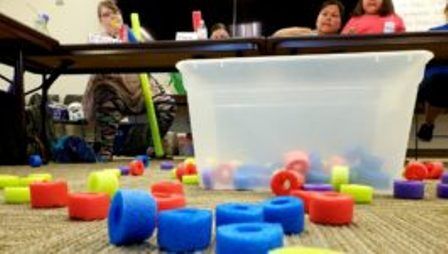By Govinda Budrow, FDLTCC Education Faculty and For the Wisdom of the Children FDLTCC Project Director
When it comes to STEM, it may be the roots that hold us in the field, the classroom, and in our love for science, technology, engineering and mathematics.
As Native Americans, there has been a complicated history and relationship with formalized education. Beginning with boarding schools and day schools that mandated assimilation and rejection of Indigenous community languages and wisdom, the disruption has spanned for well over a century, with the abusive boarding school era coming to a close as late as the 1970s. Each generation since these boarding schools struggles with the false dichotomy that one can either be Indigenous or do well in school.
Navigating educational systems that have little to no understanding of Native roots results in invisibility, identity struggles and questionable belonging that highlights the same “assimilation for success” messaging. Implicitly, we begin to feel that we don’t belong, and if we do belong, that we must have changed or assimilated to a way that no longer reflects our traditional communities. However, this does not have to be the case. Educational systems that are rooted in Indigenous ways of being can inspire positive relationships with formalized education among Native Americans. The support of the American Indian College Fund allowed Fond du Lac Tribal and Community College to do just that in creating courses for pre-service and in-service teachers that explore the Ojibwe roots of STEM to bring to their classrooms.
Maria Defoe, pre-service teacher in the Anishinaabe Seasonal Science course, teaching a lesson to children on the science of sugar bush.
The science, technology, engineering, arts and mathematics (STEM) in these courses were all based on original ways of being in Ojibwe communities adapted to introduce to young learners. We wanted teachers and children to connect that when we think of scientists, we see those in our communities that hold the knowledge of the plants, the animals, the weather patterns and their impacts on the environment. When we think of technology, we think of the ways that tools and methods have been created over time to help Ojibwe people thrive. When we look for engineers, artists and mathematicians, we look for those with knowledge of building wigwams, sewing, beading and designing traps. When we look for STEM, we see it in our communities and in our people. We notice it in our roots and in blood lines. When teachers incorporate this in the classrooms from a young age, we form and strengthen the understanding that STEM is not assimilation but the very essence of our cultural roots of survival and the evidence of a thriving people. Many of the participants of these courses remarked in awe at the amount of innovative technology, scientific knowledge, mathematics and engineering that was involved and connected to teaching STEM through an Anishinaabe lens. Two new courses to our Child Development programming were introduced this summer, Anishinaabe Seasonal Science and Wigwametry. Both courses helped to incorporate Ojibwe ways of being into meeting the standards and indicators of progress. Anishinaabe Seasonal Science explored STEM through the four seasons with topics like Sugar bush, beading, storytelling, gardening, ricing and more.
The students in the courses designed their own lessons and were able to work with preschool and school age children at the Tribal Head Start to teach small groups introducing STEM through Anishinaabe traditional activities.
LaVonne Bellanger, pre-service teacher in the Anishinaabe Seasonal Science Course, teaching a lesson to children on dream catchers.
Wigwametry was a mathematics-based STEM course using the building of full size and model wigwams. The students were able to spend a day with the Tribal Head Start working on early movement and physics understandings. Physics with our young learners begins with understanding the movement of their own body. Students designed physical activities and were able to work with several age groups and compare that progression of meeting the indicators. Then, students spent one full day harvesting materials with the support of tribal forestry and building a wigwam in the garden of the Tribal Head Start.
Finished Wigwam at the Fond du Lac Head Start with Wigwametry students and instructors.
The feedback for both courses reflected extreme growth in learning about STEM from an Anishinaabe perspective and plans to use concepts in their classrooms and community. This begins a change that impacts teachers in the field and training to enter the field, by expanding their viewpoints of STEM. Many teachers have felt ill-prepared about addressing cultural knowledge in their classrooms and this often results in a void in the connection to community and impacts children’s beliefs about their abilities in STEM. If classrooms and teacher training programs focus on STEM with only one narrative for its roots, many diverse learners will be disconnected from the field.
Recognizing the Native roots will nourish STEM in our tribal communities and encourage our children to reject the false dichotomy and embrace harmony with school success and identity walking in one world.

